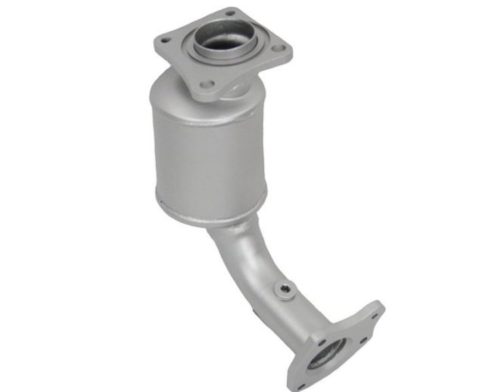If you’ve ever had your car serviced, there’s a good chance that the mechanic mentioned something about “precats.” But what are they? What do they do? And why are they important? In this blog post, we will answer all of these questions and more. We’ll explain what pre-catalytic converters are, where they are located, and how they work. We’ll also discuss pre-cat failure and some of the common symptoms. So if you’re curious about precats, read on!
What Exactly Are Pre-Catalytic Converters?
Pre-catalytic converters are devices that are fitted to the exhaust system of a car. Their purpose is to reduce the emission of harmful gases such as carbon monoxide (CO) and hydrocarbons (HC). Pre-cats work by converting these gases into less harmful substances before they are emitted into the atmosphere.
All cars sold in the United States since 1975 must be equipped with a catalytic converter. However, not all cars have a pre-catalytic converter. In fact, most newer cars have what’s known as a “twin” or “double” catalytic converter system. This means that there is one catalytic converter located near the engine (the pre-cat) and another located further down the exhaust system (the main catalytic converter).
How Do Pre-Catalytic Converters Work?
Pre-catalytic converters work by using a catalyst to convert harmful gases into less harmful substances. The catalyst is usually made of platinum or palladium, and it helps to speed up the chemical reaction that occurs when the gases are heated. As the gases pass through the pre-cat, they are converted into water vapor (H₂O) and carbon dioxide (CO₂).
The main catalytic converter in a vehicle is very effective at converting harmful compounds within the exhaust gas, but only when it’s working at high temperatures. However, there can be a brief period of time where emissions are allowed to pass directly through the converter into the air if the engine isn’t warmed up yet.
To prevent this from happening, some vehicles have pre-catalytic converters which work to eliminate some of these gases before they enter into the main catalytic converter. This protects both the main converter and prevents any potential damage.
What Are Some Common Symptoms of Pre-Cat Failure?
One of the most common reasons for pre-catalytic converter failure is due to contamination. Contamination can come from a number of sources including oil, coolant, or even unburned fuel. When any of these materials get into the converter, it can cause damage that will eventually lead to failure.
Another reason for pre-catalytic converter failure is a build-up of deposits. These deposits can come from a variety of sources including engine coolant, exhaust gases, and even fuel additives. Over time, these deposits can build up and clog the converter, causing it to fail.
Finally, pre-catalytic converters can also fail due to physical damage. This damage can be caused by a number of things including improper installation, collision damage, or even exposure to extreme temperatures. Any of these factors can cause the converter to crack or break, leading to failure.
Pre-cat failure is a serious engine problem that can cause a wide range of symptoms. Some common symptoms include:
-Check Engine Light: The check engine light is one of the most common indicators of pre-cat failure. If your check engine light comes on, it’s important to have your vehicle checked by a qualified mechanic as soon as possible.
-Decreased Fuel Efficiency: Pre-catalytic converters help improve fuel efficiency by converting harmful emissions into less harmful gases. When they fail, fuel efficiency will usually decrease.
-Increased Exhaust Emissions: Another symptom of pre-cat failure is increased exhaust emissions. You may notice this as an increase in smoke or fumes coming from your tailpipe especially before the main cat is up to temperature.
Can You Remove Precats ( Precat Delete )?
Yes, it is possible to remove the precats installed on a car’s engine – but is it a good idea?
There are a few reasons why you might want to remove the precatalytic converter from your car’s engine. One reason is that it might be damaged or blocked and needs to be replaced.
Another reason is that you might want to improve your car’s performance. Removing the precatalyst can increase horsepower because it decreases backpressure in the exhaust system.
Are There Any Drawbacks Of Removing Precats?
However, there are also a few reasons why you might not want to remove the precatalytic converter. One reason is that it can increase emissions of certain pollutants, such as carbon monoxide and hydrocarbons. Another reason is that it can void your car’s warranty.
So, should you remove the precatalytic converter from your car’s engine? That depends on your individual circumstances. If you are having problems with your catalytic converter, then you might want to replace the precatalyst. Or, if you are looking for a way to improve your car’s performance, then removing the precatalyst might be an option for you.
However, if you are worried about emissions or warranties, then you might want to leave the precatalyst in place. Ultimately, the decision is up to you.
Go Home









